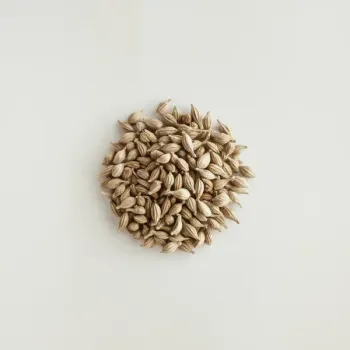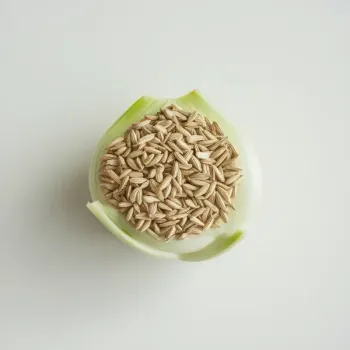Caraway seeds have a warm, earthy flavor with anise and pepper notes, used in European cuisine. Fennel seeds, sweeter with a licorice-like flavor, are common in Mediterranean and Indian cooking. Both are aromatic but differ in intensity and are used to enhance various dishes, from breads to meats.

Caraway seeds are the dried fruit of the Carum carvi plant, offering a warm, earthy flavor with hints of anise and pepper, often associated with European cuisine.

Fennel seeds come from the Foeniculum vulgare plant and are known for their sweet, licorice-like flavor, prominently featured in Mediterranean and Indian dishes.
While both seeds share a similar licorice note, caraway seeds are more pungent with a bittersweet sharpness, and fennel seeds are sweeter and less intense. Caraway seeds are smaller and darker than the greener, plumper fennel seeds. Originating from different plants, they also have variations in their nutritional profiles and culinary uses.

Your ultimate Recipe Box, Meal Planner, and Cooking Class all in one
Ideal for rye and soda breads, caraway seeds add a complex flavor depth. Expect a robust, earthy taste that complements the hearty textures of these breads. To enhance the flavor, lightly toast the seeds before baking. Fennel seeds are excellent in sweet breads and Italian sausages. They impart a mild sweetness that can balance richer breads. Use them whole for bursts of flavor or ground for a more subtle infusion.
Caraway seeds are a staple in sauerkraut and pork dishes, especially in German cuisine. They add an aromatic and earthy note that complements the richness of meats. For best results, use them in marinades or as part of a dry rub. Fennel seeds shine in Italian sausage, meatballs, and pork roasts. Their sweet profile pairs well with the savory flavors of meat, offering a counterbalance that enhances the dish. Toasting the seeds or crushing them can release more flavor.
In soups and stews, caraway seeds contribute a warming note. They work particularly well in lentil soups and beef stews. Add them early in the cooking process to allow their flavor to permeate the dish. Fennel seeds can elevate seafood stews and tomato-based soups. Their sweet, aromatic quality can help to balance acidity and add complexity. Use them sparingly, as their flavor can become dominant.
Both caraway and fennel seeds are low in calories but rich in nutrients, including fiber, antioxidants, and minerals like calcium, iron, and magnesium.
| Nutrient | Fennel Seeds ( per Tablespoon ) | Caraway Seeds ( per Tablespoon ) |
|---|---|---|
| Fat | 0.9g | 1g |
| Fiber | 2.3g | 2g |
| Calcium | 73mg | 20mg |
| Protein | 1g | 1g |
| Calories | 20 | 22 |
| Carbohydrates | 3g | 2g |
You can, but it will change the flavor profile. Caraway seeds are more pungent, so use less than you would fennel seeds.
They are not directly interchangeable due to their distinct flavors. Substitutions should be made according to the desired taste of the dish.
Caraway seeds are best suited for breads, like rye and soda bread, as well as savory dishes like sauerkraut and pork.
Fennel seeds offer digestive benefits, are rich in antioxidants, and have anti-inflammatory properties.
Store them in a cool, dry place in an airtight container to maintain their flavor and freshness.